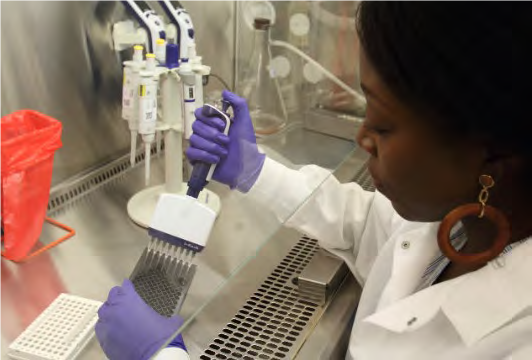Initial round of bioanalytical screening completed for Bight ’18 sediment, fish samples

SCCWRP and its partners have completed screening Southern California Bight sediment and fish tissue samples for chemical contaminants that activate the aryl hydrocarbon receptor – the first of three bioanalytical screening analyses that will be applied at a regional scale through the Southern California Bight 2018 Regional Monitoring Program.
The results of the analysis, completed in February, are being compared to Bight ’18 sediment toxicity and chemistry data to examine whether bioanalytical screening can identify the same impacted sites as traditional sediment-quality analysis methods. Furthermore, the comparison with chemistry data will help understand which chemical classes are likely to impact aquatic life.
In addition to the aryl hydrocarbon receptor assay, researchers also will screen more than 100 sediment and fish tissue samples using the androgen receptor assay and estrogen receptor assay. A subset of the samples, meanwhile, will be analyzed using non-targeted chemical analysis, with a goal to establish habitat-specific chemical fingerprints and identify bioactive chemicals.
The project is expected to be completed in summer 2021.
More news related to: Bioanalytical Cell Screening Assays, Emerging Contaminants, Regional Monitoring, Sediment Quality, Southern California Bight Regional Monitoring Program